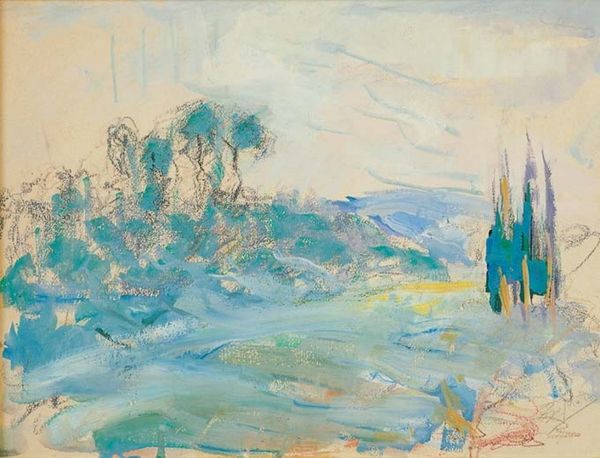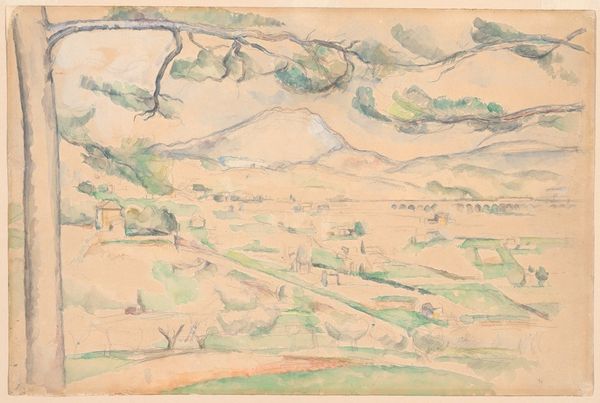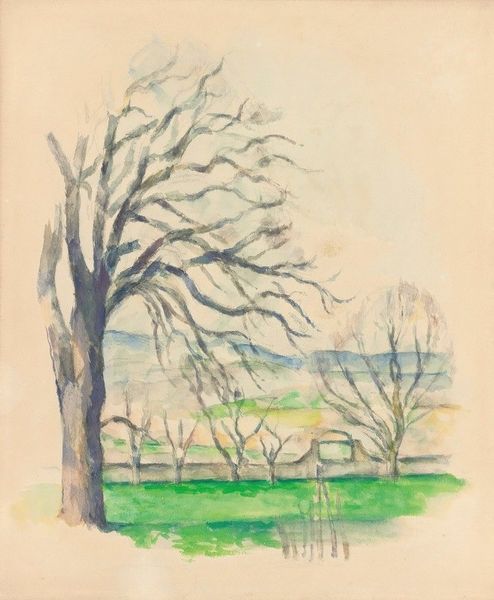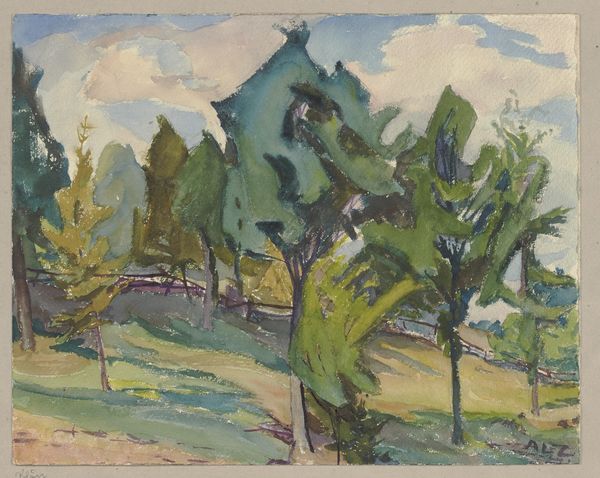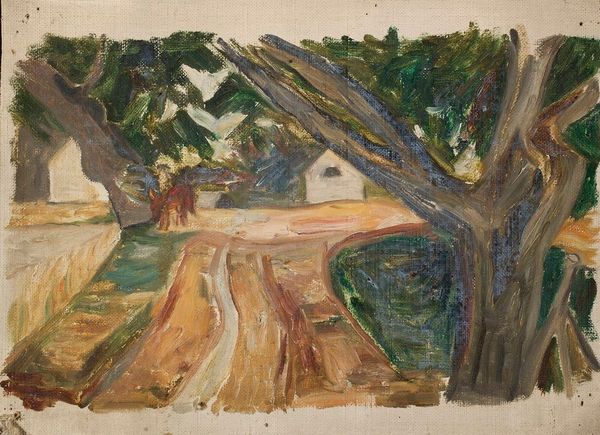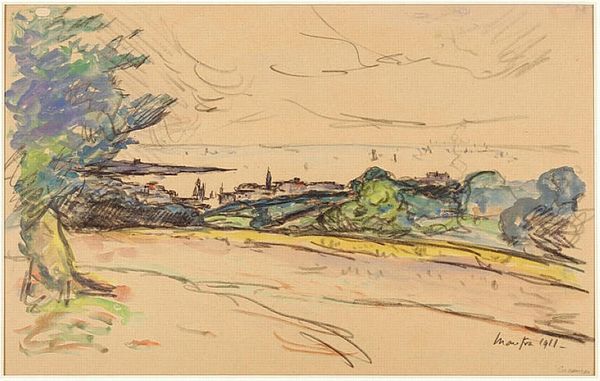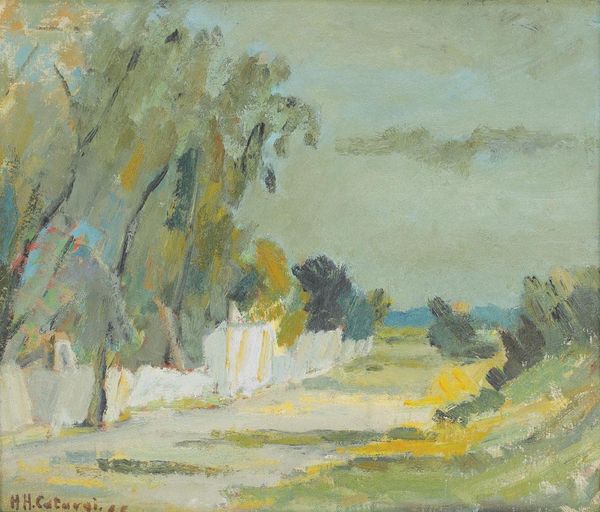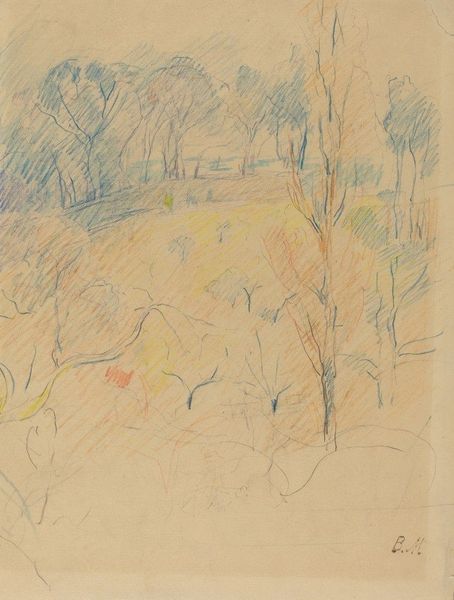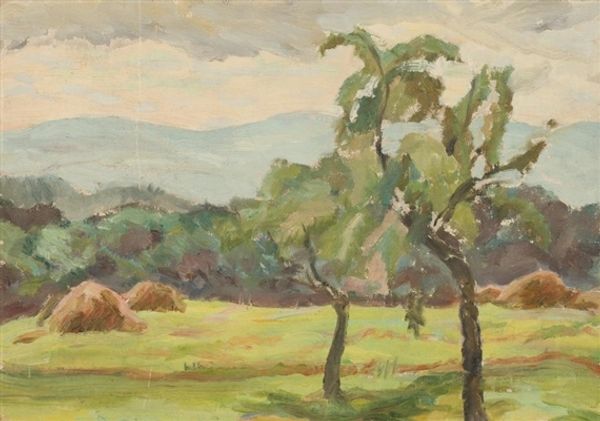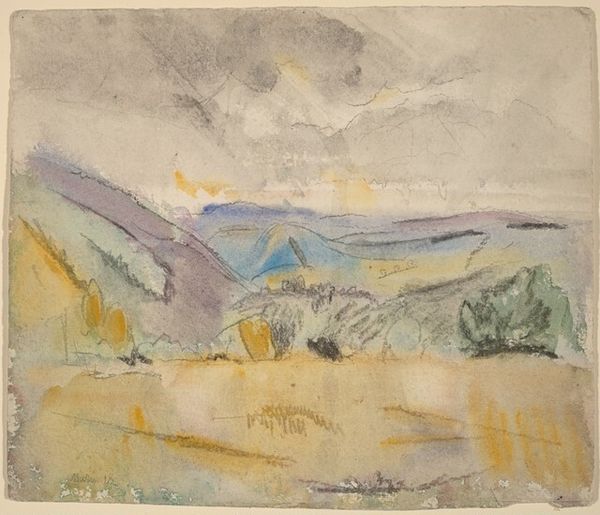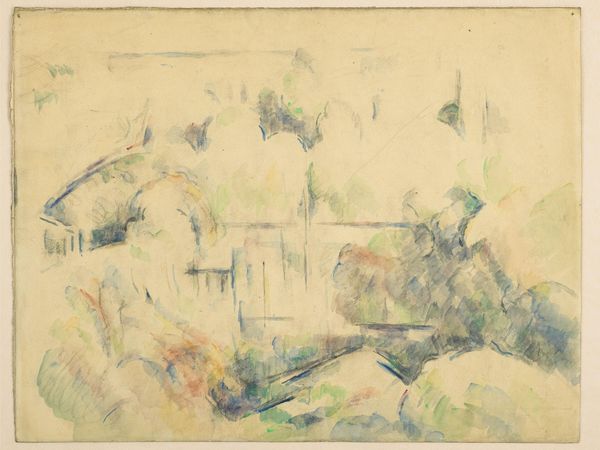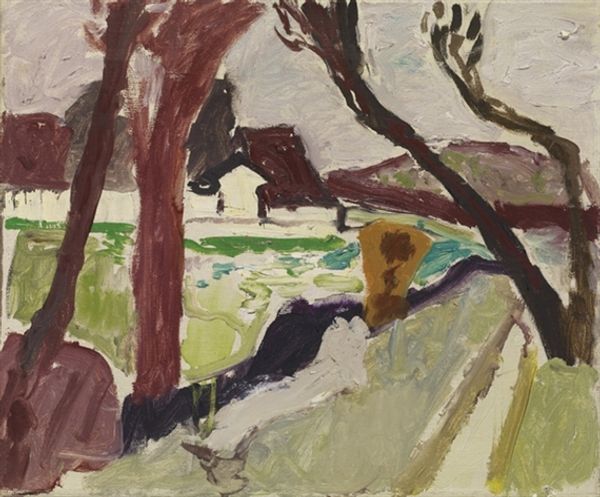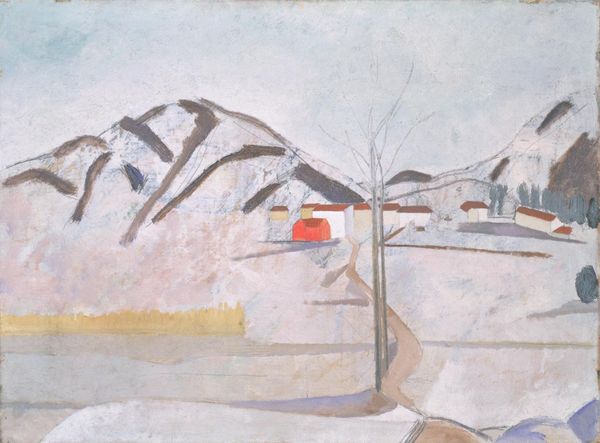
plein-air, watercolor
#
impressionism
#
plein-air
#
landscape
#
oil painting
#
watercolor
#
watercolour illustration
#
watercolor
Copyright: Public Domain: Artvee
Paul Cézanne's "Paysage D’hiver" is a landscape rendered with oil on canvas, marked by its delicate and seemingly unfinished quality. The composition centers on a cluster of buildings behind a wall, punctuated by the stark, leafless branches of trees reaching upwards. Cézanne employs a muted palette of earth tones – gentle browns, soft blues, and muted greens – to evoke the stillness of winter. Patches of color are laid down in deliberate, visible strokes, creating a structured yet fragmented image. Here, Cézanne is not simply representing a landscape, but deconstructing the very act of seeing. The visible brushwork and the structural use of color function as signs within a semiotic system. They challenge the conventional representation, inviting the viewer to consider the underlying architecture of perception itself. This approach destabilizes fixed meanings, suggesting that reality is not a singular, objective truth, but rather a collection of subjective experiences.
Comments
No comments
Be the first to comment and join the conversation on the ultimate creative platform.
